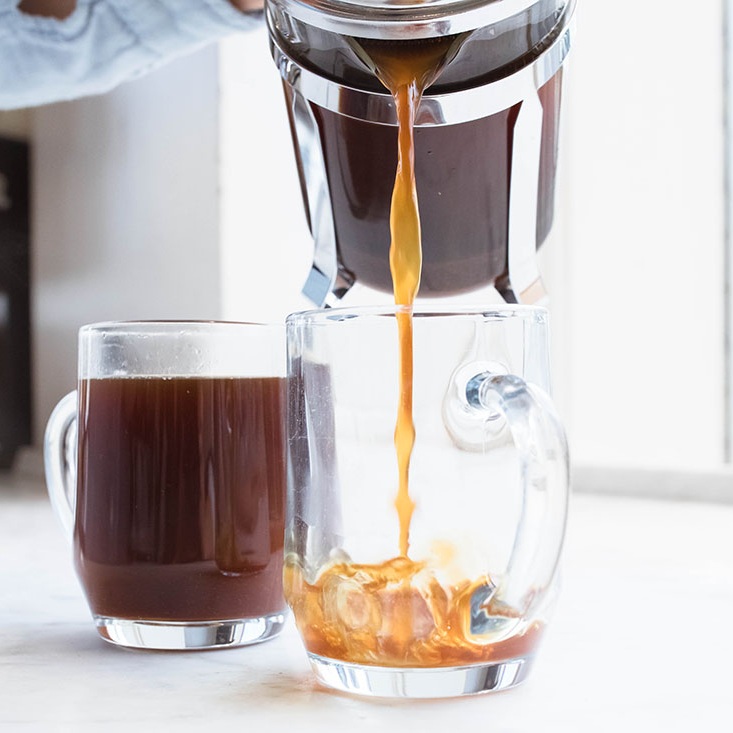The Blue Bottle No-Press French Press Brewing Guide
Unprecedented clarity in 15 minutes. Just don’t press.
Background
One of our favorite coffee experts, Bryn Garrehy developed this method inspired by another no-press method from coffee writer James Hoffman. Brewing the coffee for 15 minutes results in a cup of exceptional clarity of taste. Read more.
WHAT YOU’LL NEED
Coffee
French press
Grinder
Kettle
Scale
Timer
2 spoons
BREW TIME
15 minutes
Step 1
Measure the coffee and water. We like a 1:15 brew ratio for this technique. For our 17-ounce French press, that works out to 40 grams of coffee and 600 grams of water.
Step 2
Grind the coffee slightly finer than is recommended for French press—coarser than for a pour over, but not by much.
The finer grounds will promote more even extraction, by providing more surface area to make up for less overall interaction with the water—after all, the grounds are going to settle at the bottom of the press, where they won’t make much contact with the water at all.
Step 3
Warm the press. This is a fifteen-minute process, so you’ll want to start with a hot vessel (in Step 9 below, you’ll also be heating the coffee cups in much the same way). Fill the empty French press with boiling water, then empty it and wipe dry. Minimizing heat loss also helps ensure a more even extraction, since a temperature drop can slow the extraction down.
Step 4
Add the grounds to the dry heated French Press.
STEP 5
Add the water in a two-phase pour.
1: The Bloom Pour
Working in a spiral motion, pour in just enough water to moisten the grounds (about 60 grams) Wait for 30 seconds as the grounds bloom.
2: The Fill Pour
Begin again, pouring in a steady and quick stream, so that the water uplifts the grounds as it rises. Stop pouring when you’ve added 600 grams total. Let the coffee stand, uncovered, for 4 minutes.
STEP 6
At 4 minutes, break the crust. Using 1 or both spoons, gently break the crust. Using the backs of the spoons, push the coffee grounds gently towards the opposite rim of the glass. The motion will propel many of the grounds to fall slowly below the surface, eventually sinking to the bottom. Use a soft touch, so that agitation is minimal and the extraction more even.
A light and foamy film will remain; similar to the crema that tops a good espresso, it’s a combination of emulsified oils, sugars, and proteins. Using 1 or both spoons, skim off and discard.
Let the coffee continue to stand, uncovered, for 11 minutes longer.
Step 7
Watch (optional). As the coffee steeps, you might notice speckles forming on the surface. These are brew colloids. As Ted Lingle writes in The Coffee Cuppers’ Handbook, “just as dust and water vapor combine in the atmosphere to form clouds,” oil and sediments in the coffee combine into colloids and contribute texture and flavor. Immersion methods such as French press, retain more colloids than pour overs—and instant coffees possess none at all.
STEP 8
At 13 minutes, set the plunger on top of the coffee.
Do not press down. Brew for 2 minutes longer.
Step 9
Meanwhile, heat 2 serving cups just as you did the French press in Step 3, using hot tap water, then wiping dry.
STEP 10
At 15 minutes, pour. Without plunging, pour the coffee into the 2 heated cups.
Step 11
Taste and enjoy.









